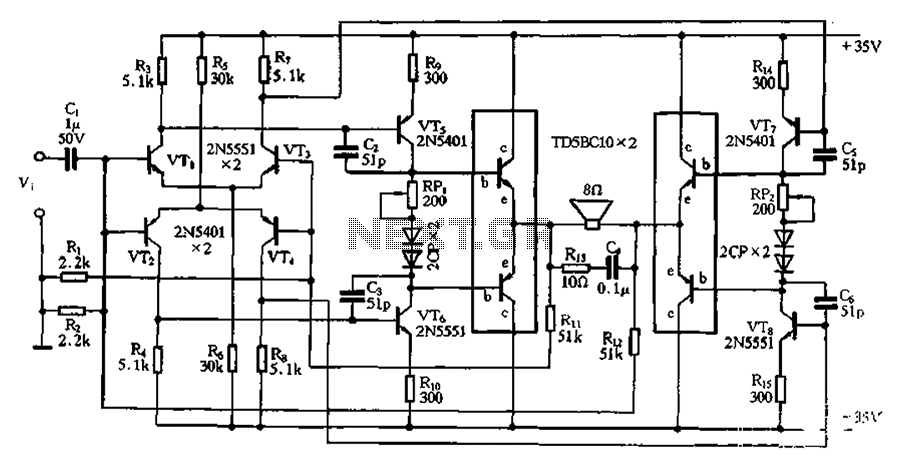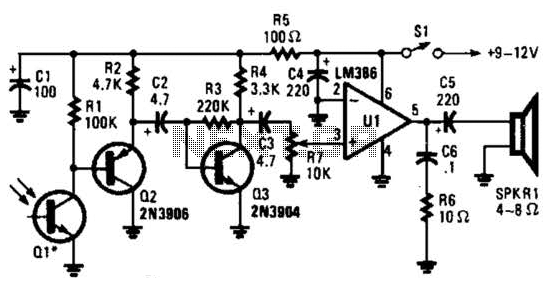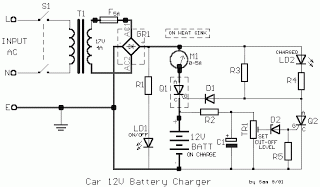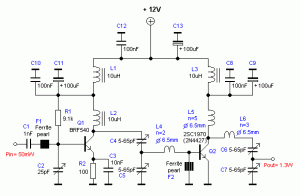
DC supply voltage circuit indicates one of the more limited
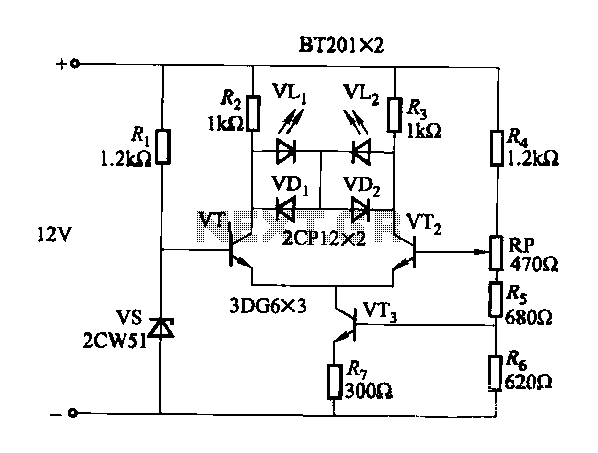
The circuit for monitoring DC power supply under-voltage and over-voltage is depicted in Figure 13-93. It is designed to ensure that the DC power supply voltage remains within normal operating limits. When the supply voltage is at 12V, the sampling voltage is set to 6V, and both light-emitting diodes (LEDs) remain off. If the supply voltage drops to 11.9V, the green LED (VLz) activates. Conversely, if the supply voltage exceeds 12.1V, the red LED (VLi) lights up.
The DC power supply voltage monitoring circuit is essential for applications where maintaining a stable voltage is critical for the operation of connected devices. The circuit utilizes a voltage divider to sample the input voltage, which is then compared against predefined thresholds using a comparator.
When the supply voltage is at the nominal value of 12V, the voltage divider's output is stable, resulting in both LEDs being off. This indicates that the voltage levels are acceptable. The green LED serves as an under-voltage indicator, and its activation at 11.9V signals that the supply voltage has dropped below the acceptable limit. This is critical for alerting users to potential issues that could affect device performance or safety.
On the other hand, the red LED functions as an over-voltage indicator, lighting up when the voltage exceeds 12.1V. This feature is crucial for preventing damage to sensitive electronic components that may be connected to the power supply. The circuit can be integrated into various systems requiring voltage monitoring, such as power management systems, battery chargers, and industrial equipment.
In summary, this monitoring circuit provides a simple yet effective means of ensuring that the DC power supply operates within safe voltage limits, utilizing visual indicators to alert users to any deviations from normal operation.DC power supply under-voltage, over-voltage indicator circuit shown in Figure 13-93, use it to monitor the DC power supply voltage is normal. When the supply voltage is 12V, ad just RP, the sampling voltage of 6V. Two light-emitting diodes are not bright. When the power supply down to 11. 9V, the green LED lights VLz; when the supply voltage exceeds 12.1V, the red LED lights VLi.
The DC power supply voltage monitoring circuit is essential for applications where maintaining a stable voltage is critical for the operation of connected devices. The circuit utilizes a voltage divider to sample the input voltage, which is then compared against predefined thresholds using a comparator.
When the supply voltage is at the nominal value of 12V, the voltage divider's output is stable, resulting in both LEDs being off. This indicates that the voltage levels are acceptable. The green LED serves as an under-voltage indicator, and its activation at 11.9V signals that the supply voltage has dropped below the acceptable limit. This is critical for alerting users to potential issues that could affect device performance or safety.
On the other hand, the red LED functions as an over-voltage indicator, lighting up when the voltage exceeds 12.1V. This feature is crucial for preventing damage to sensitive electronic components that may be connected to the power supply. The circuit can be integrated into various systems requiring voltage monitoring, such as power management systems, battery chargers, and industrial equipment.
In summary, this monitoring circuit provides a simple yet effective means of ensuring that the DC power supply operates within safe voltage limits, utilizing visual indicators to alert users to any deviations from normal operation.DC power supply under-voltage, over-voltage indicator circuit shown in Figure 13-93, use it to monitor the DC power supply voltage is normal. When the supply voltage is 12V, ad just RP, the sampling voltage of 6V. Two light-emitting diodes are not bright. When the power supply down to 11. 9V, the green LED lights VLz; when the supply voltage exceeds 12.1V, the red LED lights VLi.
